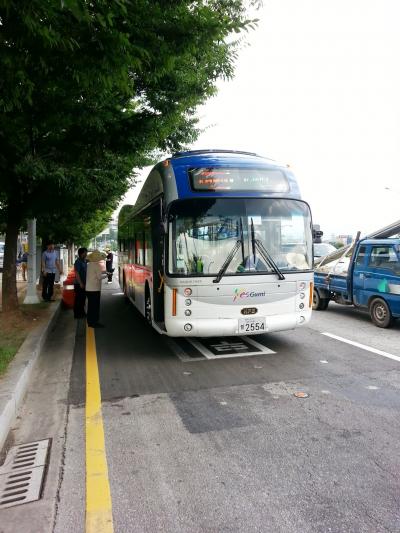South Korea has taken the electric vehicle to a whole new level, developing a way to make electric vehicles a viable option for future transportation systems.
About two years ago, researchers from the Korea Advanced Institute of Science and Technology (KAIST) introduced the world to the Online Electric Vehicle (OLEV) that could be charged while stationary or even while driving.

The OLEV bus hit the road in Gumi City this week. (Image via KAIST)
This technology eliminates the need for charging stations, as we’ve seen in other electric vehicles such as the Nissan LEAF, and removed the need for power wires hanging above the vehicle in order to supply the electric.
Now, these buses have officially hit the roads of the Republic of Korea. This week, two OLEV buses are providing citizens with transportation for the first time and will run throughout the City of Gumi between the Gumi Train Station and In-dong district for a total roundtrip distance of about 15 miles.
During the trip, the OLEV buses will receive 20 kHz and 100 kW of electricity at an 85% maximum power transmission efficiency rate.
How are they powered?
The OLEV buses contain only a very small battery that’s about one-third of the size of a battery in a traditional electric vehicle, so they are mainly powered wirelessly using “Shaped Magnetic Field in Resonance” technology which enables electric vehicles to transfer electricity wirelessly from the road while still moving.

This electric vehicle can be charged while driving. (Image via KAIST)
The power comes from electrical cables buried beneath the road that create magnetic fields, which are received by a device installed on the underside of the bus. Since the power strip under the road takes up anywhere from 5% to 15% of the entire road, only a few sections of road need to be altered to accommodate the cables.
The road is smart, too. It can differentiate between a regular car and an OLEV bus so the power supply can switch on and off accordingly, preventing electric and magnetic fields exposure and standby power consumption that could be harmful to citizens’ health.
If all goes well by the end of this year, Gumi City plans to get 10 more OLEV buses on its roads by 2015.
Advertisement
Learn more about Electronic Products Magazine





